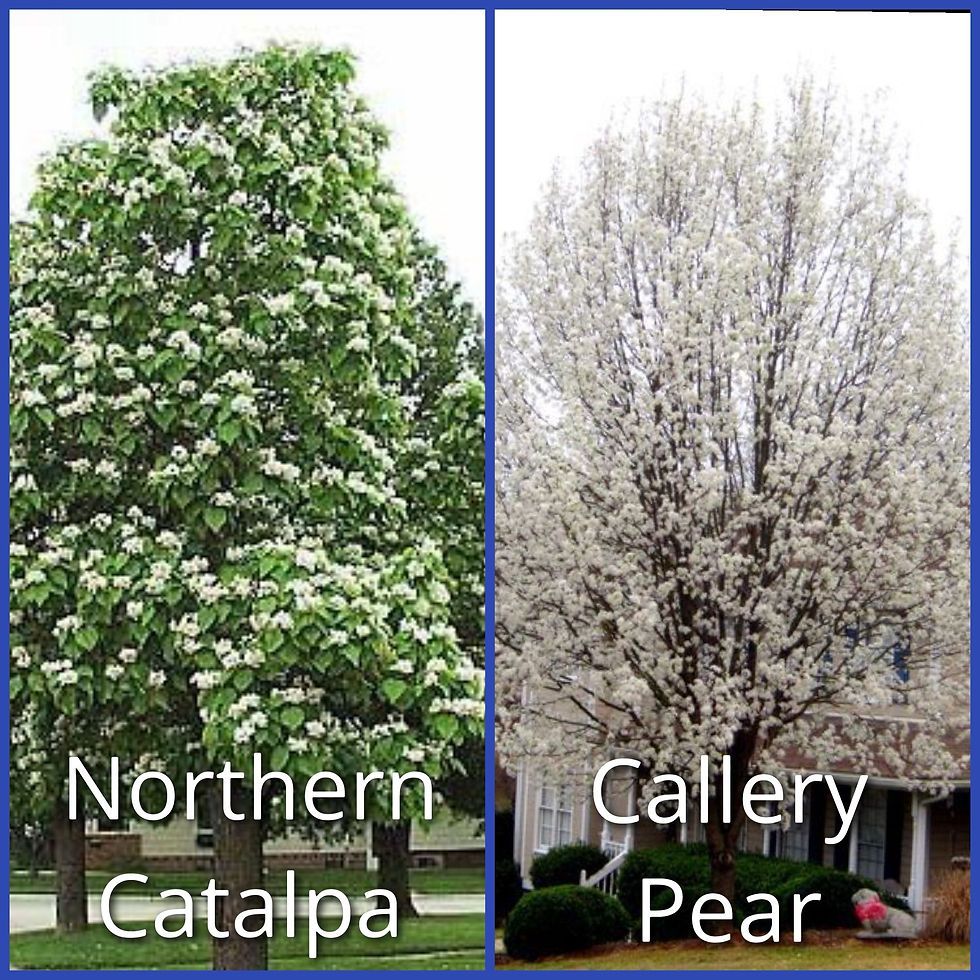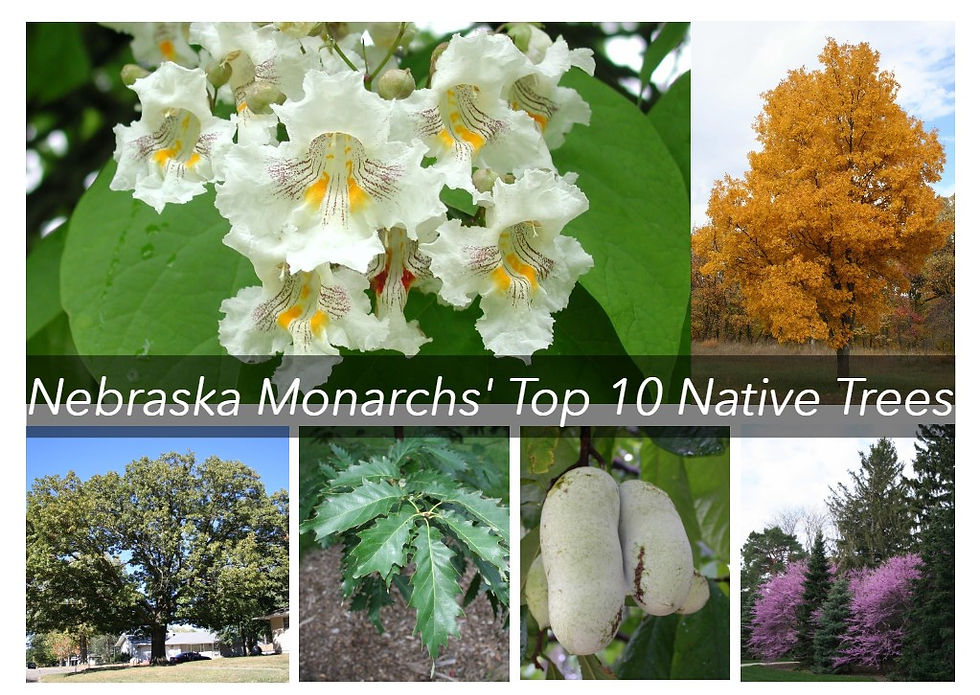Replacing Trees Lost to Storms: A Guide for Omaha Residents
- Robert Gittins
- Aug 13, 2024
- 3 min read

This summer, devastating storms have swept through Omaha, damaging homes, vehicles, and properties. Our thoughts are with everyone affected by these natural disasters. We understand the emotional and financial toll that losing a tree can have on your property and your sense of home. As we begin to recover and replant, it’s essential to consider our choices wisely to foster a healthier, more resilient urban forest.
Many of the trees that suffered the most damage during these storms were non-native species that have not adapted well to Nebraska's unique climate conditions. One such tree is the Callery Pear (Pyrus calleryana), often referred to as the Bradford Pear. This tree has been a popular choice in our area for over 30 years due to its fast growth, appealing shape, and beautiful spring blooms. However, despite its aesthetic appeal, the Callery Pear is also known for its unpleasant odor and inherent weaknesses. Its branches tend to break easily in storms, and as an invasive species, it spreads rapidly across Nebraska’s landscapes, further challenging our native ecosystems.
In light of this, it is vital to consider planting native trees that are more suited to our local environment. Not only do these trees thrive better, but they also support local wildlife and contribute positively to our ecosystem.
If you’re looking for a lovely white-flowering tree as a replacement, consider the Northern Catalpa (Catalpa speciosa). This native tree provides ample shade, has aesthetically pleasing flowers, an alluring fragrance, and serves as a valuable food source for pollinators like bees and butterflies.

For a tree that supports a diverse range of wildlife, nothing beats the Oak (Quercus). Native oaks are essential for pollinators, offering habitat and food sources for many species of butterflies and bees. Their acorns are a staple food for various wildlife, including songbirds, squirrels, deer, turkeys, and even foxes, making them a fantastic addition to any landscape.
We have also curated a list of 10 native Nebraska trees that we love at Nebraska Monarchs because of their use by wildlife and pollinators. You can review the list and why we selected each tree in our post Nebraska Monarchs Top 10 Native Trees for Pollinators! (nemonarchs.com).

As you embark on your replanting journey, we encourage you to consult local resources for guidance on the best native trees for your area. The Nebraska Natural Resource Districts offers a comprehensive handbook detailing suitable tree options tailored to our local ecosystem, which can be accessed here (https://www.papionrd.org/wp-content/uploads/2016/08/tree_booklet_2010.pdf).
Let’s rebuild our community together by choosing native trees that will flourish, support our wildlife, and stand strong against future storms. Remember that every tree planted is a step towards restoring the beauty of our shared environment while ensuring it remains resilient for generations to come.
Additional Resources:
Nebraska Monarchs, Top 10 List of Native Trees for Pollinators! Nebraska Monarchs Top 10 Native Trees for Pollinators! (nemonarchs.com)
Nebraska Game & Parks, Important Native Trees of Nebraska for Pollinators:
Nebraska Extension Office, Top 10 Plants for Wildlife:
Nebraska Statewide Arboretum, Trees and Shrubs for Wildlife:
University of Nebraska, Handbook of Nebraska Trees: A Guide to the Native and Most Important Introduced Species (Revised 1966):
University of Nebraska Forest Service:
University of Nebraska Forest Service, Trees to plant in Nebraska:
University of Nebraska Forest Service, Oak trees for Nebraska:
#Replanting #2024Storm #NativeTrees #Trees #NebraskaTrees #Omaha #TreeRecovery #Sustainability #Biodiversity







Comments